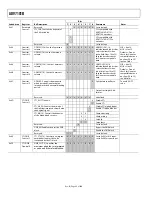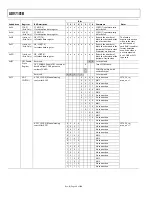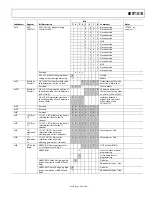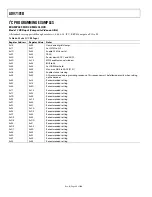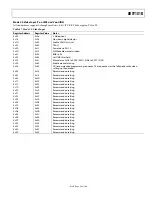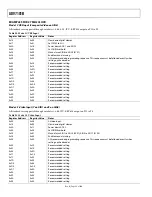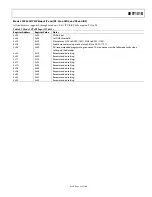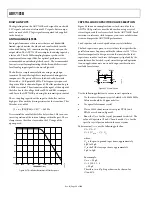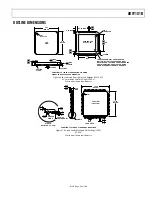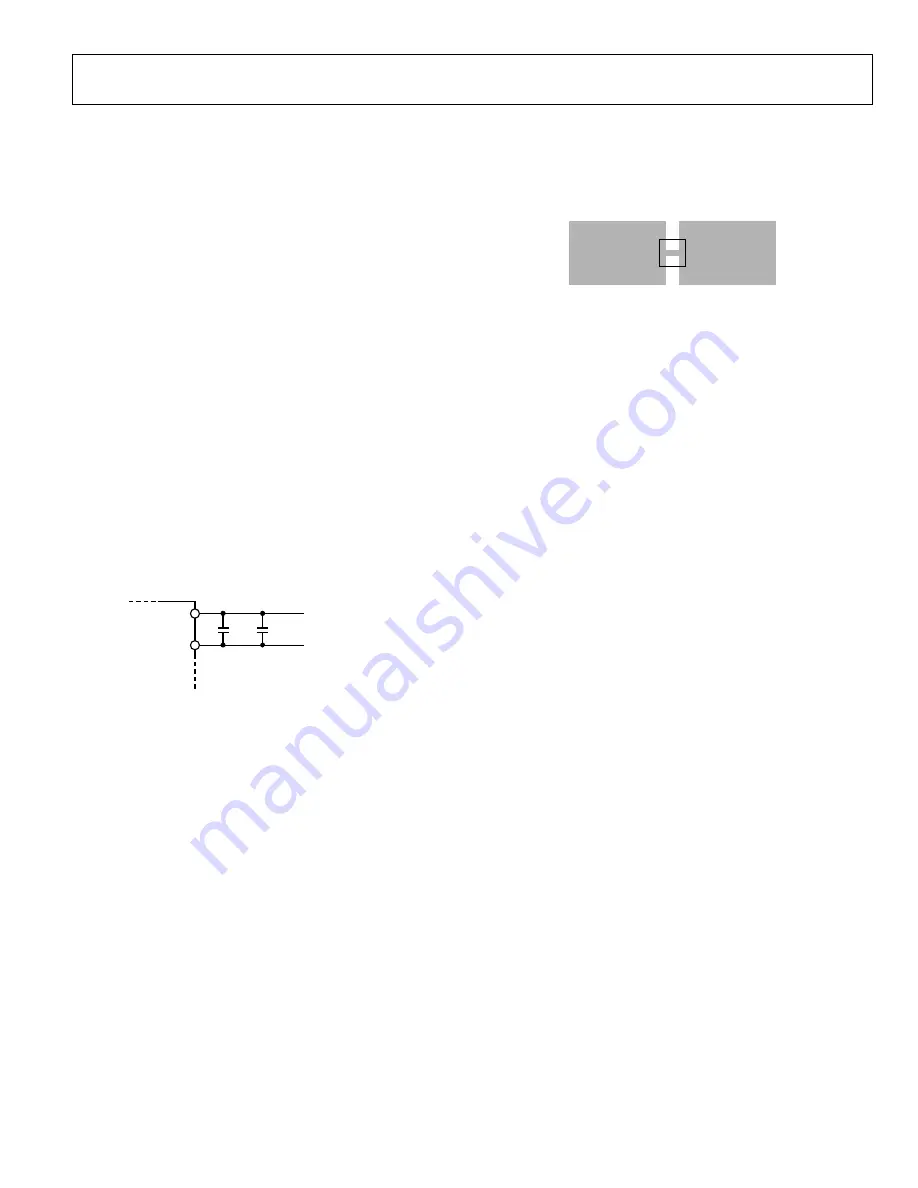
ADV7181B
Rev. B | Page 95 of 100
PCB LAYOUT RECOMMENDATIONS
The ADV7181B is a high precision, high speed mixed-signal
device. To achieve the maximum performance from the part, it
is important to have a PCB board with a good layout. The
following is a guide for designing a board using the ADV7181B.
ANALOG INTERFACE INPUTS
Care should be taken when routing the inputs on the PCB.
Track lengths should be kept to a minimum, and 75 Ω trace
impedances should be used when possible. Trace impedances
other than 75 Ω also increase the chance of reflections.
POWER SUPPLY DECOUPLING
It is recommended to decouple each power supply pin with
0.1 μF and 10 nF capacitors. The fundamental idea is to have a
decoupling capacitor within about 0.5 cm of each power pin.
Also, avoid placing the capacitor on the opposite side of the PC
board from the ADV7181B, as doing so interposes resistive vias
in the path. The decoupling capacitors should be located
between the power plane and the power pin. Current should
flow from the power plane to the capacitor to the power pin. Do
not make the power connection between the capacitor and the
power pin. Placing a via underneath the 100 nF capacitor pads,
down to the power plane, is generally the best approach (see
Figure 40).
VDD
GND
10nF
100nF
VIA TO SUPPLY
VIA TO GND
04984-040
Figure 40. Recommended Power Supply Decoupling
It is particularly important to maintain low noise and good
stability of PVDD. Careful attention must be paid to regulation,
filtering, and decoupling. It is highly desirable to provide
separate regulated supplies for each of the analog circuitry
groups (AVDD, DVDD, DVDDIO, and PVDD).
Some graphic controllers use substantially different levels of
power when active (during active picture time) and when idle
(during horizontal and vertical sync periods). This can result in
a measurable change in the voltage supplied to the analog
supply regulator, which can, in turn, produce changes in the
regulated analog supply voltage. This can be mitigated by
regulating the analog supply, or at least PVDD, from a different,
cleaner power source, for example, from a 12 V supply.
It is also recommended to use a single ground plane for the
entire board. This ground plane should have a space between
the analog and digital sections of the PCB (see Figure 41).
ANALOG
SECTION
DIGITAL
SECTION
ADV7181B
04984-041
Figure 41. PCB Ground Layout
Experience has repeatedly shown that the noise performance is
the same or better with a single ground plane. Using multiple
ground planes can be detrimental because each separate ground
plane is smaller and long ground loops can result.
In some cases, using separate ground planes is unavoidable. For
those cases, it is recommended to place a single ground plane
under the ADV7181B. The location of the split should be under
the ADV7181B. For this case, it is even more important to place
components wisely because the current loops are much longer
(current takes the path of least resistance). An example of a
current loop: power plane to ADV7181B to digital output trace
to digital data receiver to digital ground plane to analog ground
plane.
PLL
Place the PLL loop filter components as close as possible to the
ELPF pin. Do not place any digital or other high frequency
traces near these components. Use the values suggested in the
data sheet with tolerances of 10% or less.
DIGITAL OUTPUTS (BOTH DATA AND CLOCKS)
Try to minimize the trace length the digital outputs have to
drive. Longer traces have higher capacitance, which requires
more current, which causes more internal digital noise. Shorter
traces reduce the possibility of reflections.
Adding a 30 Ω to 50 Ω series resistor can suppress reflections,
reduce EMI, and reduce the current spikes inside the ADV7181B.
If series resistors are used, place them as close as possible to the
ADV7181B pins. However, try not to add vias or extra length to
the output trace to make the resistors closer.
If possible, limit the capacitance that each of the digital outputs
drives to less than 15 pF. This can easily be accomplished by
keeping traces short and by connecting the outputs to only one
device. Loading the outputs with excessive capacitance increases
the current transients inside the ADV7181B, creating more
digital noise on its power supplies.


